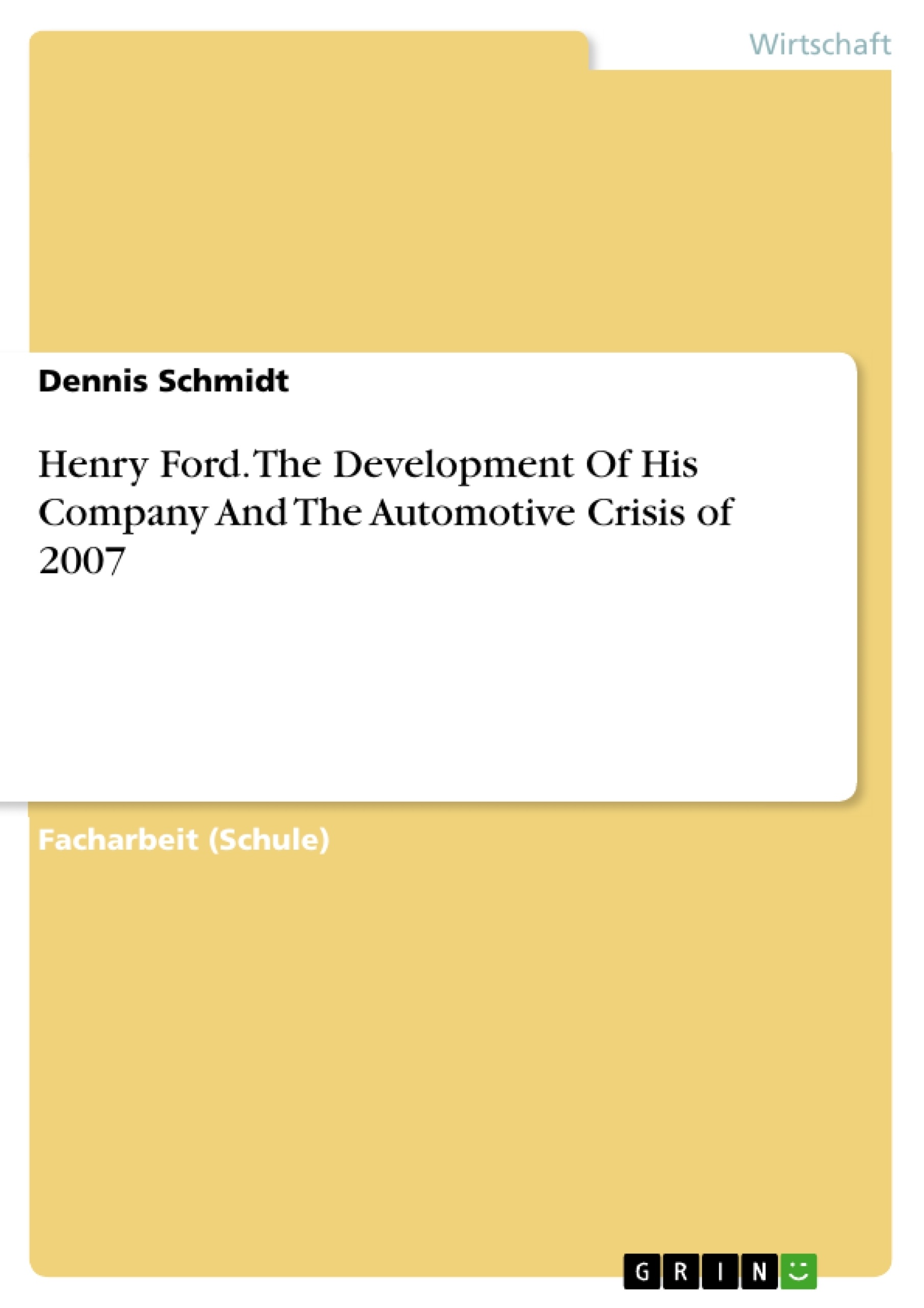When you ask people in the street what they associate with the term “Ford“, the majority will immediately say that it is a famous car brand. Nearly everybody has already heard about “Ford” in many different contexts. We all know the “Ford Mustang”- probably today’s most established Ford product – or the “Model T”, the first mass-produced car of all times and the most sold car at the beginning of the history of the world’s automobile industry.
However, even for successful automakers times are not always glorious. At the moment the international car industry is seriously suffering from the worldwide economic crisis triggered by the collapse of the US banking system in 2009. Car companies are desperately searching for solutions to overcome the depression. It is highly interesting to see how Ford - in comparison to other leading carmakers – is reacting to the problem.
In the following research paper I will elaborate a detailed discussion of Ford’s personal background and career, including the development of his own car company.
Additionally, I will illustrate the effects of the current economic recession on the automotive sector and show – by comparing it to General Motors – how Ford Motor Company is fighting for survival.
Inhaltsverzeichnis
- Introduction
- Life of Henry Ford.
- Personal background..
- Youth and early professional life.
- Private Life
- Ford and the Jews
- Characterization.
- Ford's appreciation in society - Fordism.......
- The Ford Motor Company
- Henry starting the business.
- The Model A and the Model T
- The Five-Dollar Day.
- The assembly line
- Creation of an empire……………………..\n
- Harry Bennett..\n
- Black Tuesday.\n
- Working conditions and riots ....\n
- The company after Henry
- The Automotive Crisis.
- Origins and progress
- Counter measures.
- Impact on the automotive market
- Ford's reaction compared to GM's
- Ford's way through the crisis....
- The fate of General Motors .........
Zielsetzung und Themenschwerpunkte
Diese Forschungsarbeit befasst sich mit dem Leben von Henry Ford, der Entwicklung seines Automobilunternehmens und den Auswirkungen der aktuellen Wirtschaftskrise auf die Automobilindustrie. Sie analysiert Fords persönlichen Hintergrund und Karriere, die Entstehung der Ford Motor Company und die Herausforderungen, denen das Unternehmen in der heutigen Zeit gegenübersteht.
- Die Entwicklung der Ford Motor Company unter Henry Fords Leitung
- Fords Einfluss auf die Automobilindustrie und die Einführung des Fließbandes
- Die Auswirkungen der Wirtschaftskrise auf die Automobilindustrie
- Der Vergleich von Fords Reaktion auf die Krise mit der Reaktion von General Motors
- Die Bedeutung von Henry Ford als Unternehmer und seine Rolle in der Geschichte der Automobilindustrie
Zusammenfassung der Kapitel
Das erste Kapitel bietet eine Einführung in das Thema und stellt die Relevanz von Henry Ford und der Ford Motor Company in der heutigen Zeit dar. Das zweite Kapitel beleuchtet Fords persönliches Leben, seine Jugend und seine frühen beruflichen Erfahrungen. Das dritte Kapitel befasst sich mit der Gründung der Ford Motor Company, der Entwicklung des Model T und der Einführung des Fließbandes. Das vierte Kapitel analysiert die Ursachen und Auswirkungen der aktuellen Wirtschaftskrise auf die Automobilindustrie. Das fünfte Kapitel vergleicht Fords Reaktion auf die Krise mit der Reaktion von General Motors.
Schlüsselwörter
Die Forschungsarbeit beschäftigt sich mit den Themen Henry Ford, Ford Motor Company, Automobilindustrie, Wirtschaftskrise, Fließband, Model T, Fordism, General Motors, Unternehmertum, Wirtschaftsgeschichte, Innovation.
- Arbeit zitieren
- Dennis Schmidt (Autor:in), 2010, Henry Ford. The Development Of His Company And The Automotive Crisis of 2007, München, GRIN Verlag, https://www.grin.com/document/295914



